Herein we present to you our choice of 6 Extremely Localized Invertebrates. Our magnificent world teems with millions of species, most of whom inhabit wide ranges of the world. Yet some of them, however, have more limited territories. Most rare of all are those who, for various reasons, can only be found in extremely tiny portions of the world. These particular invertebrates certainly qualify in that regard. We hope that you enjoy the article.
Lord Howe Island Stick Insect
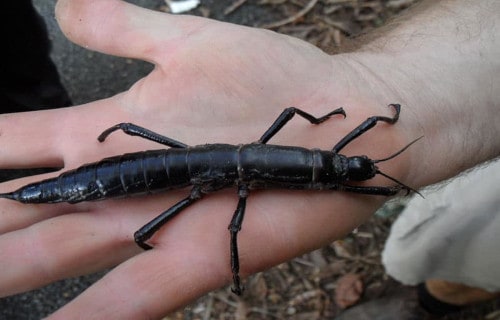
CCL: http://bit.ly/2IjEG4n
Lord Howe Island Stick Insect Facts
- Leading off our list of 6 Extremely Localized Invertebrates comes the incredible Lord Howe Island Stick Insect.
- Also known to some people as the tree lobster, this remarkably amazing insect represents a true marvel to researchers.
- This occurs due to the fact that the rather amazing invertebrate was thought to be extinct for more than 80 years.
- In fact, however, it ranks as the rarest known insect on earth, with only 24 known individual specimens in existence.
- Rather understandably, the IUCN currently lists this remarkable creature as Critically Endangered.
- Lastly, it exists in only one small known location. Therefore, its primary threats consist of climate change and habitat loss.
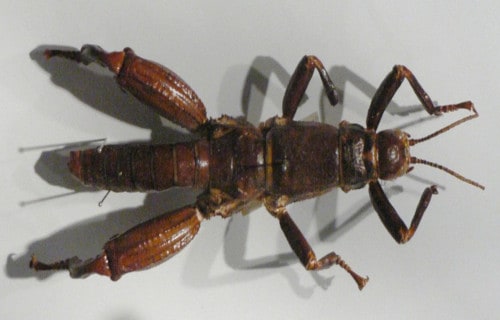
CCL: http://bit.ly/2xLZ0ap
Lord Howe Island Stick Insect Physical Description
This breathtaking insect also has the ability to grow to a maximum known length of about 8 in (20 cm).
However, the remarkable species also displays a moderate degree of sexual dimorphism, with females averaging 20% smaller than males.
Individuals have a rather elongated, sturdy shape. The larger males also tend to have thicker thighs than females.
Unlike most related species, however, this creature possesses no wings but does have the ability to run rather quickly along the ground.
Colors also vary between individuals, without regard to gender. Most notably, these include various shades of black, brown, and reddish.
- Kingdom: Animals
- Phylum: Arthropoda
- Class: Insecta
- Order: Phasmatodea
- Family: Phasmatidae
- Genus: Dryococelus
- Species: D. australis
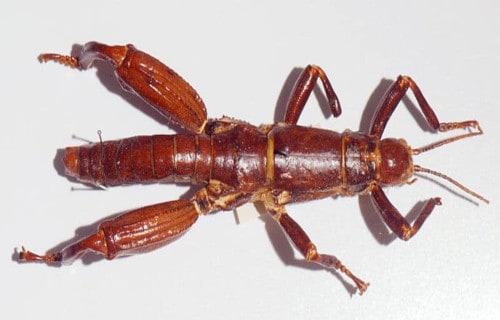
CCL: http://bit.ly/2P4R3Ic
Lord Howe Island Stick Insect Distribution, Habitat, and Ecology
Most notably, this mesmerizing creature currently only lives on the tiny island named Ball’s Pyramid.
This extraordinarily inhospitable location also lies roughly between the continent of Australia and New Zealand.
It consists of little more than steep volcanic rock, inhabited by only a few rather small shrubs, and one tiny colony of this insect.
So, the entire surviving population of this incredible creation of Nature literally lives under one such small bush.
Uniquely, and perhaps fortuitously, the females also have the ability to reproduce through parthenogenesis.
Trogloraptor
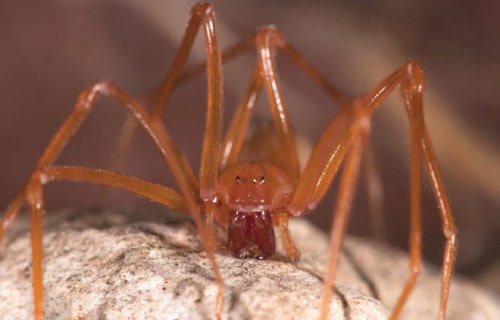
Photo: Griswold, Charles; Audisio, Tracy; Ledford, Joel
CCL: https://bit.ly/2VO4PCY
Trogloraptor Facts
- Next on our list of 6 Extremely Localized Invertebrates comes the astounding story of the Trogloraptor.
- This unforgettable creature represents a rather extraordinary species of arachnid, and perhaps the stuff of nightmares for some.
- However, despite its moderately impressive size and fearsome appearance, the remarkable creature poses absolutely no danger to humans.
- This bizarre arthropod was only discovered, quite accidentally, in 2010, by a trio of cave conservationists, during a routine exploration.
- The creature the explorers discovered evolved so differently from other arachnids that an entirely new family and genus had to be created to place it in.
- For the moment, even though its known range consists of an extremely restricted area, the IUCN does not have a listing for the creature.
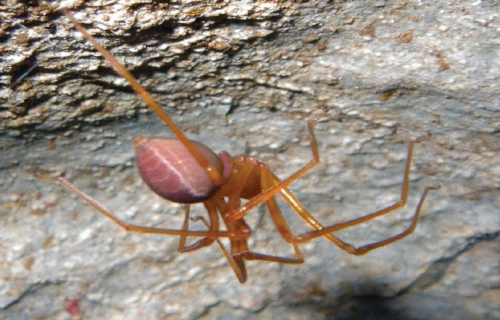
Photo: Griswold, Charles; Audisio, Tracy; Ledford, Joel
CCL: https://bit.ly/3xD9Uve
Trogloraptor Physical Description
The amazing Trogloraptor ranks as a moderately large variety of arachnid, yet the invertebrate displays no noticeable degree of sexual dimorphism, as many related species do.
Both genders possess an average body length of roughly 04. in (10 mm). The legs, however, grow rather over-sized, giving adults an overall leg span of about 3 in (7.6 cm).
Yet, regardless of its size, the Trogloraptor stands out from all other known arachnids. It evolved claws on the end of each of its eight long, thin legs.
In color, this fascinating arachnid presents a rather dull orange-brown color over its entire body, except for a dark brown V-shaped mark on its cephalothorax.
- Kingdom: Animalia
- Phylum: Arthropoda
- Class: Arachnida
- Order: Araneae
- Family: Trogloraptoridae
- Genus: Trogloraptor
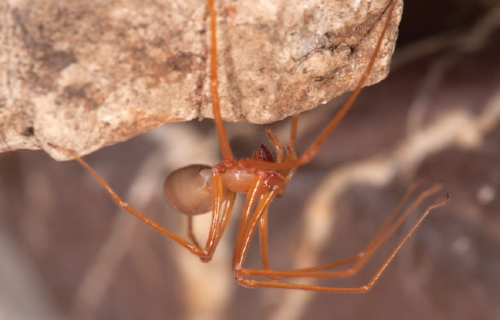
Photo: Griswold, Charles; Audisio, Tracy; Ledford, Joel
CCL: https://bit.ly/2VM7ygL
Trogloraptor Distribution, Habitat, and Ecology
To date, the entire habitat range of the incredible Trogloraptor consists of two caves in the state of Oregon, United States, in North America.
Multiple specimens have been recovered so far, but all lived in one of two caves near the city of Grants Pass, in Josephine County.
This rather surprising arachnid most commonly spins small, uncomplicated webs. These it almost always creates on the ceiling of the cave it inhabits.
From there, individuals either capture prey in the small webs or drop on them from above. However, the exact prey of the species remains a mystery.
Although the Trogloraptor possesses venom glands, like many arachnids, its venom poses no known threat to humans.
Orange Peel Doris
Orange Peel Doris Facts
- The third of member of our list of 6 Extremely Localized Invertebrates, a fascinting creature, bears the humorous yet descriptive name of the Orange Peel Doris.
- This unique creature, equal parts cute and bizarre in appearance, bears the common name for the obvious reason. The distinctive term for it’s certainly more easily pronounced than the scientific name. That’s the tongue-twisting Acanthodoris lutea.
- Regardless of which term one uses to refer to it, the animal remains a remarkable species of gastropod mollusk. The American malacologist, Frank McFarland, made the first official scientific recognition of it as a separate and distinct species, in 1925.
- The common name understandably derives from its colorful appearance. Due to that, it’s considered by many to be among the most noticeable of the known nudibranchs. To date, researchers recognize more than 3,000 types of nudibranch, or sea slug.
- For the moment, this marvel of Nature and evolution holds a decidedly favorable status, compared to some of its relatives. Presently, its numbers appear to be stable and sufficient. This further holds true throughout the entirety of its known natural range.
- The IUCN, therefore, has no listing for it on the organization’s Red List. It nevertheless could face several potential threats in the future, given the rapidly changing conditions of the oceans. Both habitat loss and climate change could one day threaten it.
Orange Peel Physical Description
The Dazzling Orange-Peel Doris clearly impresses those who encounter it for reasons having nothing to do with size. In point of fact, it’s moderate-sized. It’s clearly not the largest of its kind, by far. That distinction’s held by the remarkable Black Sea Hare.
In terms of relative size, it’s respectably average-sized, though. Mature adults typically attain a length measuring roughly 1.18 in (30 mm). The overall body shape remains relatively elongated. This usually changes as it moves, however, extending and contracting.
In most specimens, the head’s only distinguishable by the presence of two horn-shaped protuberances. These develop equally spaced atop the had of the creature. Both present the same overall color as the rest of the body, except for a dark patch at the top.
Being hermaphroditic in nature, the Orange-Peel Doris evolved differently than many animals. Due to this, it does not display the physiological characteristic of sexual dimorphism. This tends to be true of most creatures possessing this characteristic.
Its most noticeable characteristic, however, clearly remains its coloring. The entire body mainly presents a bright orange color, except for the tips of the two horn-shaped structures. It also manifests a smattering of small yellow specks across the entire body.
- Kingdom: Animalia
- Phylum: Mollusca
- Class: Gastropoda
- Order: Nudibranchia
- Family: Onchidorididae
- Genus: Acanthodoris
- Species: A. Lutea
Orange Peel Doris Distribution, Habitat, and Ecology
Unfortunately, the amazing Orange-Peel Doris possesses a highly restricted habitat range. Currently, the animal’s only known to live within a relatively tiny range of the Eastern Pacific Ocean. That zone of habitation further remains extremely restricted in nature.
The nudibranch only appears to live along portions of the west coast of the continent of North America. More precisely, its known range extends from Cape Arago, in Oregon, in the United States, to northern regions of Baja California, in the country of Mexico.
Its own nature also limits the extent of the area in which it appears. This holds true because the mollusk only lives in very specific ecosystems. Firstly, these consist of the subtidal and intertidal zones. But the creature also requires the shores to be rocky in nature.
The gastropod also evolved a highly specialized diet, like many of its relatives. This particular nudibranch feeds exclusively on tiny creatures known as bryozoans. Even more specifically, it only consumes those bryozoans within a single genus, that of Alcyonidium.
This, however, provides the Orange-Peel Doris with perhaps its only defense against predators. The particular group of bryozoans it feeds on contain specialized chemicals. Taking these into its own body, causes the flesh of the nudibranch to become toxic.
When mating, two individuals decide which will play the role of the male and female, being hermaphrodites. After mating, eggs become deposited on the stratum. After hatching, the young emerge as planktonic, slowly changing to their eventual adult forms.
Venezuelan Poodle Moth
Venezuelan Poodle Moth Facts
- Next on our list of 6 Extremely Localized Invertebrates comes the seemingly other-worldly Venezuelan Poodle Moth.
- Most notably, the astonishing Venezuelan Poodle Moth currently still remains an almost complete mystery to entomologists. This incredibly unique looking insect first made an appearance in 2009.
- The name derives from a comparison of its rather distinctive physical appearance to a cross between a moth and a poodle.
- At this point in time, entomologists know virtually nothing about it. Some assumptions, however, can be presumed to be reasonably accurate.
- The zoologist Arthur Ankerr photographed the bizarre looking Lepidoptera in 2009, while on an expedition. Dr. Anker took a total of 75 photos of the extraordinary species, yet only a few are available to view.
Venezuelan Poodle Moth Physical Description
Most notably, the Venezuelan Poodle Moth remains a nearly complete mystery to scientists. Measurements derived from Dr. Anker’s photographs show the unique Lepidoptera to be about 1 in (2.5 cm) in length.
The astonishing physical appearance, coupled with the dearth of actual information has also led to its being touted as a purported hoax on the internet.
However, the origin of the images is considered indisputable.
Experts also believe that the Venezuelan Poodle Moth may be a relative of the furry muslin moth, based on its appearance.
It is also most likely extremely rare. In fact, subsequent expeditions to the region have been unable to spot the moth again.
Venezuelan Poodle Moth Distribution, Habitat, and Ecology
To date, the only known examples of the Venezuelan Poodle Moth live in Venezuela, in South America. To be more precise, it inhabits the Canaima National Park.
The region includes rather diverse habitat types, any of which could support a population of this unique moth. These habitats include moist forest and high rock plateaus known as tepuis.
The exact classification of this rather remarkable invertebrate remains impossible at this point due to insufficient information.
However, it bears a strong superficial resemblance to the Muslin Moth, thus experts believe it represents a member of the Artace genus.
Coral Pink Sand Dune Beetle
Coral Pink Sand Dune Beetle Facts
- Sitting at fifth on our list of 6 Extremely Localized Invertebrates is the appropriately-named Coral Pink Sand Dune Beetle.
- Most notably, this lovely beetle inhabits an extremely limited range. It also occurs only in a portion of the geologic feature known as the Coral Pink Sand Dunes, in southern Utah, in the United States.
- Due to the combination of such limited range and small numbers, this insect now lists as Critically Endangered by the IUCN. Estimates also place its total current population at less than 2,000 individuals.
- It spends the entirety of its life in one tiny area, typically on the same individual sand dune. The majority of individuals venture less than 1,000 ft (300 m) from the spot where they hatched from their eggs.
Coral Pink Sand Dune Beetle Physical Description
Much as with many insects, this dazzling creature displays sexual dimorphism, with females typically larger in size than males.
However, both genders remain tiny, with an overall average body length measuring slightly less than 0.5 in (12 mm).
Though small, the coloring remains rather striking. Also, the body is generally brown or bronze. Furthermore, the upper thorax possesses a metallic sheen. While the wing cases are usually concealed, they are a brilliant white.
The eyes develop rather large in comparison to other beetles of their size. In addition, the legs grow relatively long, to keep the body away from the hot sand.
Its most noteworthy feature, however, is the presence of numerous bright white hairs lining much of the body and legs.
- Kingdom: Animalia
- Phylum: Arthropoda
- Class: Insecta
- Order: Coleoptera
- Family: Carabidae
- Genus: Cicindela
- Species: C. albissima
Coral Pink Sand Dune Beetle Distribution, Habitat, and Ecology
The breathtaking invertebrate evolved as endemic to Utah, in the United States. The species only inhabits the Coral Pink Sand Dunes geologic feature, hence the name.
The color of the sand dunes is unique and is the reason the invertebrate has evolved its own distinctive coloring.
Mating occurs in the spring, and the larvae reach adulthood the following spring.
The creature is carnivorous, and adults primarily prey upon flies and other small arthropods they can catch on the dunes.
Larvae remain in small burrows and feed on any small arthropod that wanders by.
The primary threats to its existence have been habitat loss due to climate change and the use of recreational vehicles such as buggies on the dunes.
Fortunately, its habitat is part of the Coral Pink Sand Dunes State Park. The use of buggies in the region they inhabit has now been banned by the U.S. Fish and Wildlife Service.
Yosemite Cave Pseudoscorpion
Yosemite Cave Pseudoscorpion Facts
- And the final entry on our list of 6 Extremely Localized Invertebrates is the Seemingly terrifying Yosemite Cave Pseudoscorpion.
- What a terrifying creature this newly discovered arthropod appears to be. Yet despite its fierce appearance, it remains harmless to humans.
- Firstly, this arachnid stays quite diminutive in size. In fact, it ranks as one of the smallest of all the roughly 3,000 known species of pseudoscorpion on earth
- Once again Nature has also presented us with further proof of its love of boundless variety in its creatures.
- And, as its name implies, it resides in deep caves. Even then, however, the Yosemite Cave Pseudoscorpion only seems to exist in a very specific type of cave.
Yosemite Cave Pseudoscorpion Physical Description
Fortunately for the faint of heart, the Yosemite Cave Pseudoscorpion only attains a known length of about 0.5 in (1.3 cm).
Like all troglobites, the incredible arthropod evolved to possess no eyes whatsoever. Further, in color, it generally displays a tan or amber, with reddish-brown legs.
However, this species also possesses two distinct characteristics that set it apart from other known pseudoscorpions.
For one, the pincers grow rather extremely elongated. More uniquely, however, is its other characteristic uniqueness.
By definition, a pseudoscorpion possesses no venomous stinger. The Yosemite Cave Pseudoscorpion does possess venom, however, but Nature placed it in its claws.
- Kingdom: Animalia
- Phylum: Arthropoda
- Class: Arachnida
- Order: Pseudoscorpiones
- Family: Neobisiidae
- Genus: Parabosium
- Species: P. yosemite
Yosemite Cave Pseudoscorpion Distribution, Habitat, and Ecology
Rather sadly, we have extremely little reliable information about the Yosemite Cave Pseudoscorpion. However, experts believe the invertebrate to be insectivorous, preying on numerous insects and small spiders.
This pseudoscorpion was discovered in 2010 and was found in two granite talus caves within Yosemite National Park.
This lies in the United States, in North America.a, where its habitat consists of granite rocks, granite sand, leaf litter, and also piles of debris.
Despite 5 years of research, it seems it exists nowhere else.
Finally, it has been postulated that its ancestors may have been trapped when these talus caves formed, and that, in its isolation, it slowly evolved into a distinctly different new species since that time.
6 Extremely Localized Invertebrates
We hope you have enjoyed this article on 6 Extremely Localized Invertebrates. Species such as these, even more than others, need our protection. They remain the most vulnerable to the actions of mankind of all species, due to the small areas each inhabits. It remains up to each of us to make every effort to preserve what remains of their habitats. These 6 Extremely Localized Invertebrates represent only a tiny portion of species with such limited ranges.
Check out our other articles on 9 Truly Magnificent Mantises, Global Warming: Undeniable, 7 Spellbinding African Marvels, 6 Mysterious Natural Phenomena
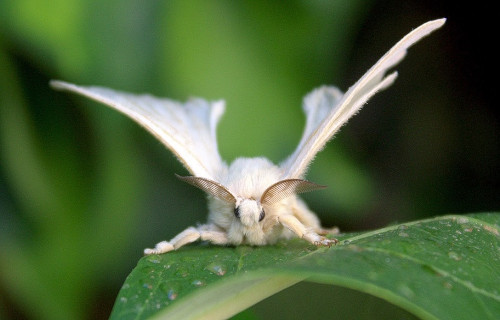
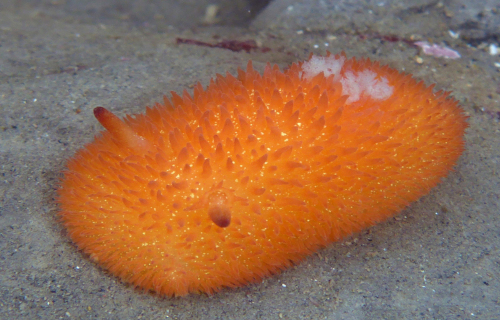
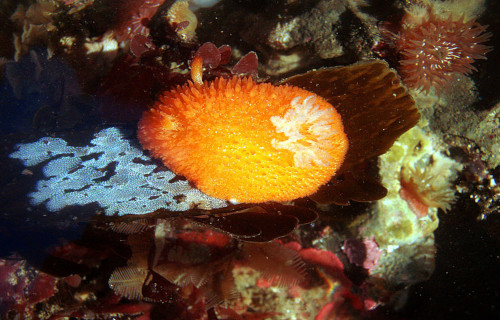
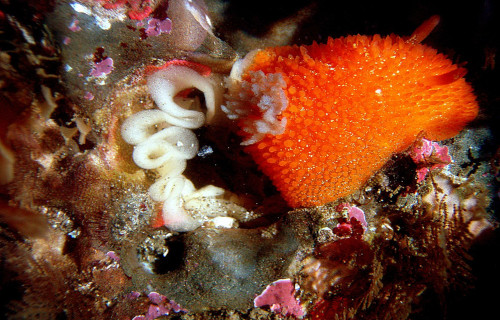
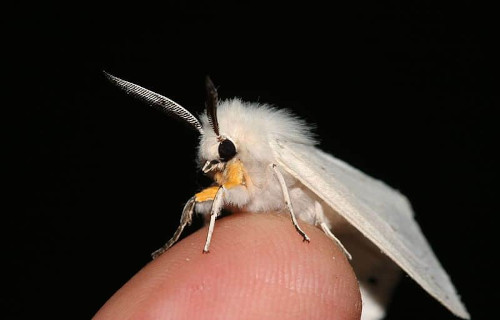
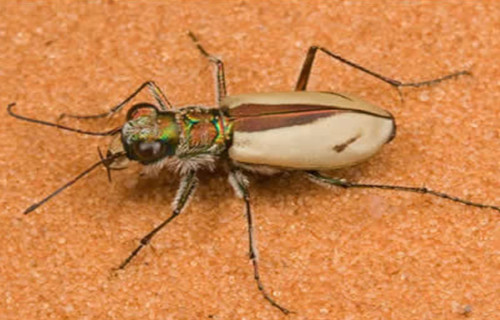
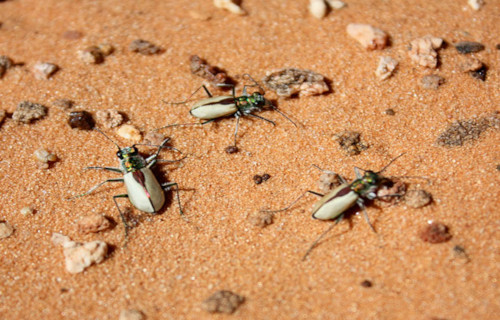
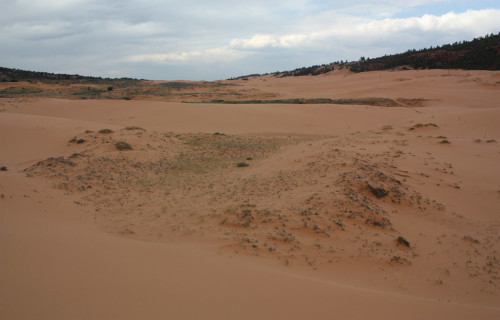
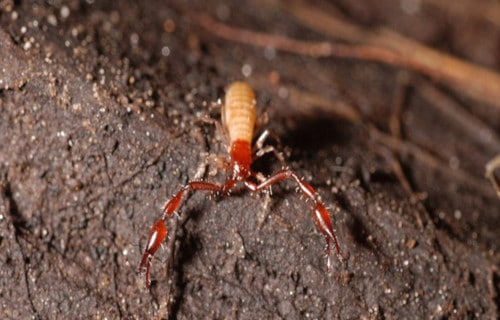
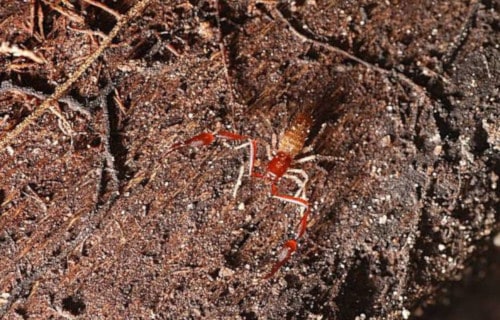









Leave a Reply